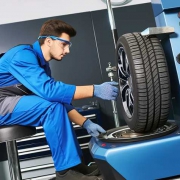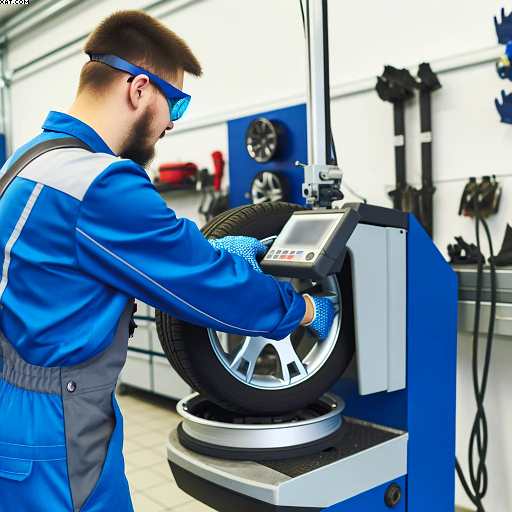Wheel Balancing Problems
Table of Contents
Wheel Balancing Problems
Wheel Balancing Problems
So you love your job, and your family life is great. Congratulations! You have achieved balance. But can you say the same for your wheels? You can tell if… (wheel balancing problems) feel vibrations under your seat or steering wheel?
Eric Roberts‘s insight:
Wheel Balancing Problems
So, this story says exactly how we balance a wheel. Some wheel balances are much more sophisticated than others. However, they are all built on the same principals. Hence to achieve the same end result a good smooth ride ! Wheel balancing is carried out on every single tyre that we fit at Pellon tyres. Including any strip and fits or puncture repairs. Although this video is from the USA. Of course the equipment is international. So we do the same thing using the same type of wheel balancing machines.
A little history about wheel balancing
The practice of balancing car wheels has been around since the early days of the automotive industry. Wooden car wheels with bolts attached were common in the early 1900s. These wheels were prone to wobbling and vibrating, which made for a rough and uncomfortable ride.
So, to address this issue, mechanics began balancing car wheels by attaching lead weights to the rim of the wheel. This helped to evenly distribute the weight of the wheel, which reduced wobbling and vibration.
As cars became more complex and sophisticated,
The process of balancing wheels also became more advanced. In the 1950s, tyre balancing machines were developed, which made it easier for mechanics to accurately balance car wheels. I remember the first sit-on balancer that we used as apprentices in the local garage.
Today, most car dealerships and tyre shops have tyre balancing machines, which use lasers or other high-tech equipment to measure the weight distribution of a tyre and wheel assembly and add weights as needed to balance it.
Who stated to balance the first? Wheel Balancing Problems
It is difficult to determine which country was the first to start balancing car wheels, as the practice likely began soon after the invention of the automobile. However, it is likely that the practice of balancing car wheels started in the countries where the automotive industry was most developed, such as the United States, Germany, and France.
These countries had the resources and expertise to develop and manufacture automobiles, as well as the infrastructure to support the growing number of cars on the road. As the automotive industry spread to other countries, the practice of balancing car wheels was also likely to spread.
Modern car balancing techniques are highly accurate and effective
Of course, reducing tyre and wheel vibration and ensuring a smooth ride. Tyre balancing machines use lasers or other high-tech equipment to measure the weight distribution of a tyre and wheel assembly and add weights as needed to balance it. Of course, these machines are typically able to balance a tyre and wheel assembly to within a few grammes of the target weight. Hence, this is more than sufficient for most applications.
In addition to using advanced equipment, modern car mechanics are also trained in the proper techniques for balancing car wheels. They are able to identify the causes of tyre and wheel vibration and determine the most effective way to balance the assembly. This combination of advanced equipment and skilled technicians allows for highly accurate and effective tyre balancing.
Overall, modern car balancing techniques. Wheel Balancing Problems
are very effective at ensuring a smooth ride and extending the life of tyres and wheels. Proper tyre balancing is an important aspect of vehicle maintenance and can help improve the performance and handling of a car.
So, our newest electronic balancer is now completely automatic. All the mechanic has to do is place the wheel on the machine spindle and press a button. After much light flashing, the machine tells our fitter where and what weights should be placed.
Wheel Balancing Problems are more noticeable when you are driving on the motorway. Significantly, there is a peculiar vibrating sensation that can detect it. Obviously, through the vehicle’s steering wheel. especially at a certain speed. Usually, speeds range between 50 and 60 mph. You can often drive through the vibrating feeling. It is unpleasant, but generally it will not go away, and it is very annoying.
Problems can make you feel the vibrations coming from the cars seat
So, it is usually the rear wheels that are out of balance. Other wheel balancing issues with your vehicle may result in a shaking of the steering wheel. Generally, though, it will be the wheel balancing that causes the vibrations and other balancing problems. The most common cause is a loss of balance. After your wheel has hit the curb (sidewalk edge), say: Logically, the weight may have come off, and this is the most common cause.
Another cause of out-of-balance wheels can be a buckled alloy wheel. significantly, caused by the pothole problem that we are all having to endure. So, to combat this, we have invested in a special machine. Of course, you can straighten bent alloy wheels back to their original shape. I will keep our customers informed in future blogs.
Thanks, Eric Roberts…www.mot-halifax.co.uk
We are also an official MOT testing station and members of Trading Standards, which carry out checks for high standards of equipment and workmanship.


